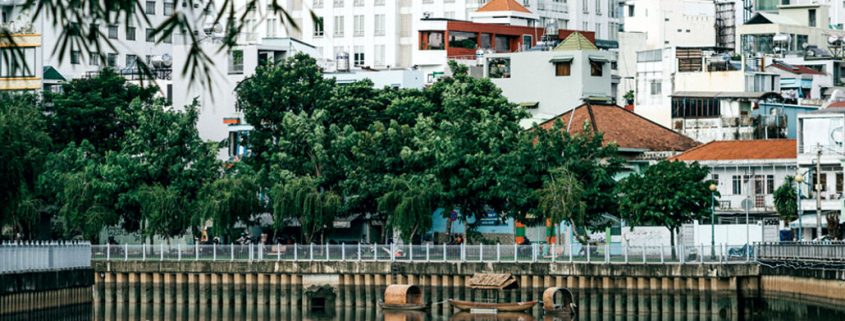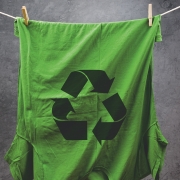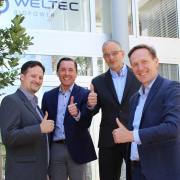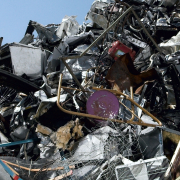Vietnam: On the Way to Circular Economy
Vietnam’s revised Law on Environmental Protection (LEP), which came into effect in January this year, aims to reinforce the extended producer responsibility of manufacturers and importers through recycling.
Back in 2020, Vietnam was considered one of the five countries that generate most solid waste accounting for about 13 million tons per year, ReportLinker – a tech company that uses artificial intelligence to deliver market data and forecasts – informed in a press release relating to its waste management market within the period from 2020 to 2025. Some years earlier, in 2017, the Asian country was said to generate an amount of 38,000 tons of municipal waste per day. “The Vietnam Environment Administration found that the extent of municipal solid waste generation in the country increases by 10-16 percent every year,” ReportLinker gave account.
At that time, about 85 percent of the waste generated in Vietnam was being buried without treatment in landfill sites, 80 percent of which were “unhygienic and pollute the environment”. The national 3R (Reduce, Recycle, Reuse) campaign had gained momentum with wastes being dumped into the nearest landfills, ReportLinker wrote. “Majority of the companies in Vietnam’s solid waste management industry are state-owned with the technologies provided by the foreign countries, few of them are large multinational companies and have subsidiaries in Vietnam. Most of the technology providers are from Singapore, China, USA and European countries. However, the adoption of technologies in the country is lower and is mainly focused on the hardware products. The disadvantage created by the unclear legislation in the industry compels oneself to utilize foreign methods to tackle waste. Numerous waste to energy technologies are being encouraged by the government to utilize the waste and make useful resources for further use.”
In 2020, there was also recycling in Vietnam. Hanoi had the highest recycling rate compared to other Asian cities with about 20 percent of the municipal waste recycled. “It’s interesting to consider that the recycling activities are practiced at a household level as people attempt to sell or also give away recyclable metal cans or paper to iron dealers or waste-pickers,” ReportLinker stated. The waste-pickers would play “a key role in the waste management system as they sort out waste at source, classify it and then sell it to recycling companies”. Most of the recycling businesses in Vietnam were either informal family businesses or small-scale enterprises. “Recycling is considered an urgent requirement in the waste management in Vietnam as an effective option to reduce waste going into landfills. In Vietnam, the National Waste Management Strategy provides a detailed framework for building a circular economy focusing on the complete waste collection by 2025.”
The national Law on Environmental Protection
In 2020, the existing Law on Environmental Protection (LEP) was revised. The online publication “Vietnam Briefing”, produced by Dezan Shira & Associates in January this year, stresses the responsibilities of ministries and localities to integrate circular economy in planning strategies, development plans, waste management, and waste recycling. “The 2020 LEP introduces the concept of circular economy through fostering extended producer responsibility (EPR) policy, highlighting the responsibility of producers and importers to recycle products and packaging. Following this, the government issued Article 54 and Article 55, which detail requirements on collection, disposal, and recycling of waste products, plastic waste, and others,” the firm, which assists foreign investors throughout Asia, informed. The law would require that domestic solid wastes must be sorted into reusable or recyclable solid wastes, food wastes, and other solid domestic wastes. “Additionally, Article 54 provides that producers and importers of products and/or packages with recycling value are responsible for collecting them for post-use recycling at the obligatory recycling rates.” As reported, this applies to both recyclable products, packaging, and waste treatment. Manufacturers can comply with the law via two options:
- organize the recycling themselves according to the given rates and specifications; or
- contribute financially to the Vietnam Environment Protection Fund (VEPF) to support the recycling of their waste.
Furthermore, Article 55 states that “organizations and individuals producing and/or importing packages, containing toxic substances, which are hardly recyclable or impede the collection and treatment, shall pay financial contributions to support daily-life solid waste treatment activities.”
Benefits
According to Dezan Shira & Associates, the circular economy presents four benefits for businesses’ sustainable development: resource efficiency, environment protection, economic development, and social benefits. “To comply with the law, Vietnam’s manufacturers and producers will now have to register recycling plans and report recycling results annually to the Ministry of Natural Resources and Environment,” the company underlined in January this year. “Local and foreign-invested companies are also advised to prepare recycling plans and budgets for EPR accordingly to address new requirements imposed by the new law.”
However, transforming into a circular economy would require a rigorous regulatory framework that allows all economic sectors to apply the model in their production from manufacturing to consumption and waste management, the firm pointed out. “Therefore, to fasten the process, Vietnam should strengthen the cooperation of the government with business entities, facilitate effective partnership with the private sector while fostering trust among businesses. With increasing government policies and raising awareness of businesses and the community, Vietnam is set to become a competitive leader in pursuing sustainable economic development.”
Foreign investment in Vietnam
Vietnam has become an attractive destination for investors. “To encourage foreign investment, the Vietnamese Government has offered a wide range of investment and tax incentive schemes. For example, the new Law on Investment (LOI) introduced a preferential corporate tax rate of five percent for a maximum period of 37.5 years for large or specially encouraged investment projects,” the Foreign Investment Agency (FIA Vietnam) stated on its website. “In addition, the Vietnamese Government has prioritized domestic infrastructure improvements and expanded the industrial real estate available to new developers.” One of the preferred industries is the water sector – water supply and wastewater. According to FIA, the Vietnamese government “will give priority in using ODA funds to developing urban water drainage systems, especially in major cities and in areas that are prone to natural calamities. The Vietnamese government also encourages funding from both domestic and foreign individuals and institutions in developing water drainage and wastewater treatment systems”.
More Information: www.fia.mpi.gov.vn/en/Single/MenuID/6eb91552-3ae6-4c5b-920c-152d979cd658#
There is a guidebook available, which was prepared in a collaboration between Foreign Investment Agency of Vietnam and Ernst & Young Vietnam Limited to provide interested investors a basic understanding of Vietnam’s investment climate; it can be downloaded at: www.fia.mpi.gov.vn/en/Detail/CatID/3f434143-6484-4308-b3ef-073c676e8467/NewsID/7bfb3f05-3d86-459e-9630-4bc0a03f342c.
(Published in GLOBAL RECYCLING Magazine 2/2022, Page 24, Photo: Quyen Luong / pixabay.com)








